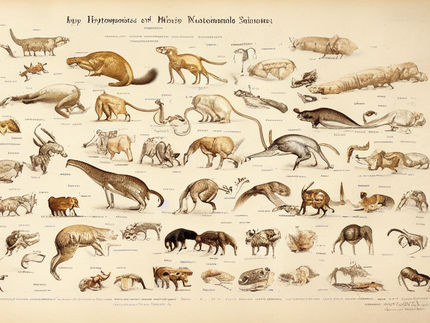Poplar DNA code cracked ? a step in combating global warming?
Advertisement
Ghent ? Forests cover 30% of the world's land area, house two thirds of life on earth, and are responsible for 90% of the biomass on dry land. So, the impact of trees on our daily life is enormous. Now, an international consortium ? which includes researchers from the Flanders Interuniversity Institute for biotechnology (VIB) at Ghent University ? has succeeded in deciphering the first tree genome, that of the poplar. Gaining knowledge of the poplar DNA is an important step in the research into 'tree-specific genes', which can be used to make trees even better air purifiers, to have them grow more quickly, or to make them easier to process into paper.
The poplar as model organism
One can hardly overstate the importance of trees as providers of clean air and energy, or as raw material for furniture, building materials, and other implements. A great many properties found in trees are not found in other plants ? like their abilities to provide large quantities of wood, to synchronize their growth with the seasons, and to adapt themselves to changing environmental conditions. They have these vital properties, because they must be able to survive for many years in the same location.
Knowledge of the genome of the poplar (Populus trichocarpa) allows researchers to look for the genes ? DNA codes for properties ? that are specific to trees. Thus, the poplar ? with the relatively limited size of its genome ? serves as a model organism for trees. Populus trichocarpa has in fact 'only' 520 million base pairs (the DNA building blocks), which is about 50 times fewer than a pine tree. Then again, the poplar has four times as many DNA as Arabidopsis, a model plant whose genome was deciphered four years ago.
In May 2002, the international consortium set to work to determine the poplar's genome. To do this, they used a female poplar from the banks of the Nisqually River in Washington state (USA). The researchers needed just over two years to determine the 520 million base pairs, distributed among 19 chromosomes.
By comparing the genomes of these two model organisms ? Populus and Arabidopsis ? scientists such as Yves Van de Peer and Pierre Rouzé hope to identify the genes specific to trees. With the aid of sophisticated computer programs, these VIB bio-informatics researchers will identify the genes in the poplar DNA. On the basis of mathematical algorithms, the researchers predict that the poplar has around 50,000 genes, and they anticipate that about 10,000 of them are not found in Arabidopsis and are therefore possibly 'tree-specific'.
A variety of applications
With the new data, molecular biologists like Wout Boerjan and his research team can get down to work to discover the functions of the genes. This basic research can provide a wealth of information about how trees work, and it can also provide answers to universal biological questions. Indeed, many of the responses and functions found in plants, and thus trees as well, are also found in human and animal life.
But this research can also lead to particular applications in fields such as ecology. A thorough genetic knowledge enables researchers to modify trees genetically for the benefit of humankind and the environment. The genome sequence can contribute to strategies for improving trees more rapidly or for modifying them genetically. Today, trees are the earth's lungs ? and, for example, they can be modified so that they work more effectively in trapping CO2, the primary greenhouse gas. In addition, new tree varieties can be produced that have a finer timber quality. Wood is also the principal material for paper production, and Wout Boerjan and his team are investigating which genes are crucial to the formation of wood and how they might optimize the structure and composition of wood to improve the production of paper.
























































